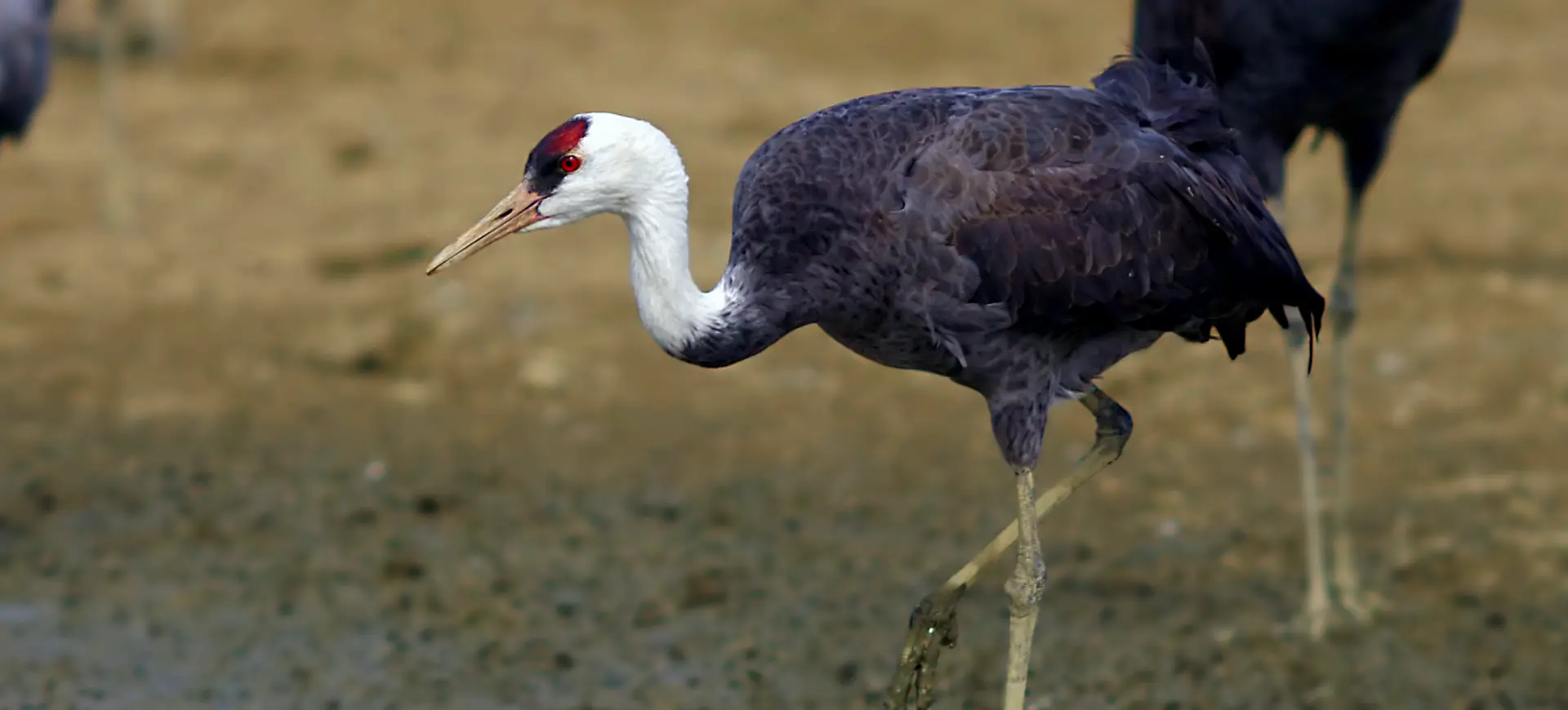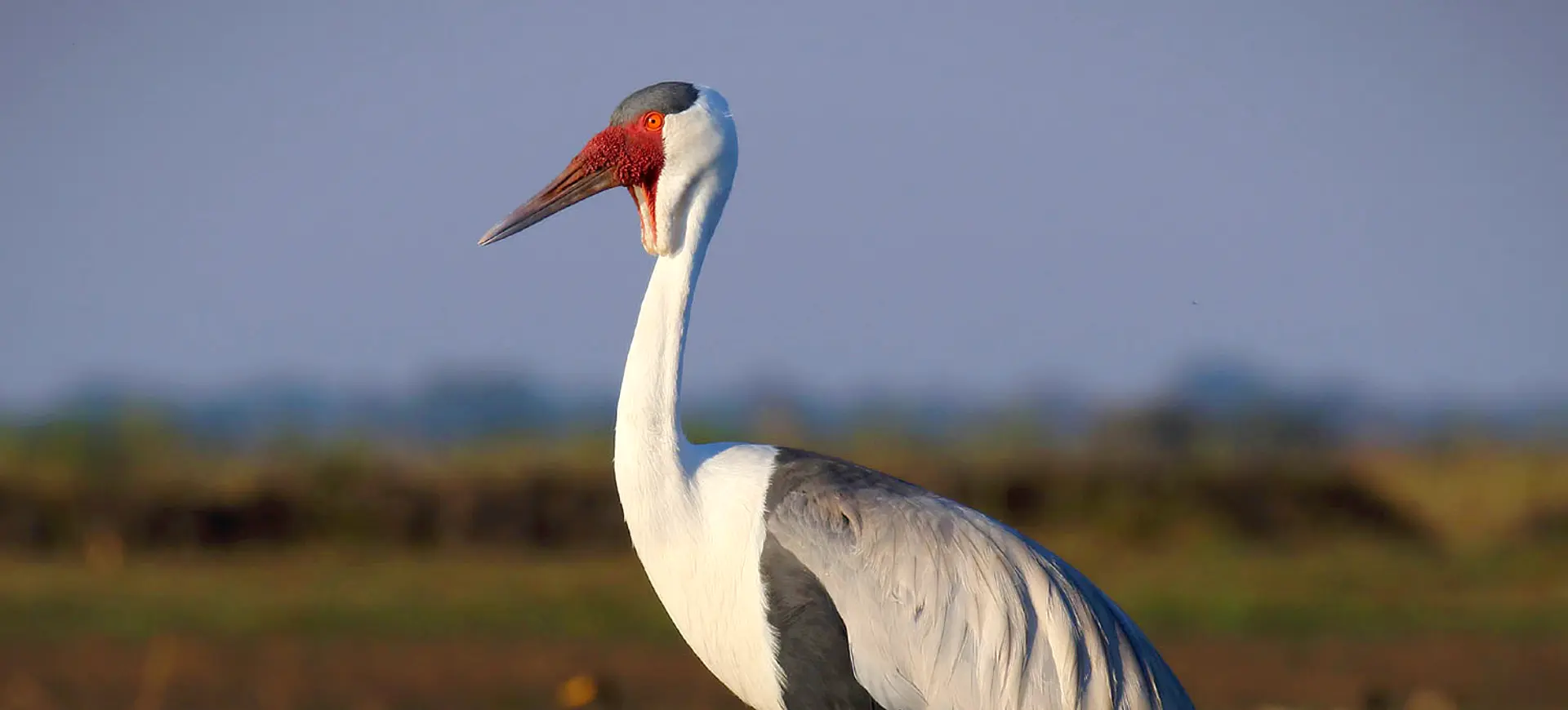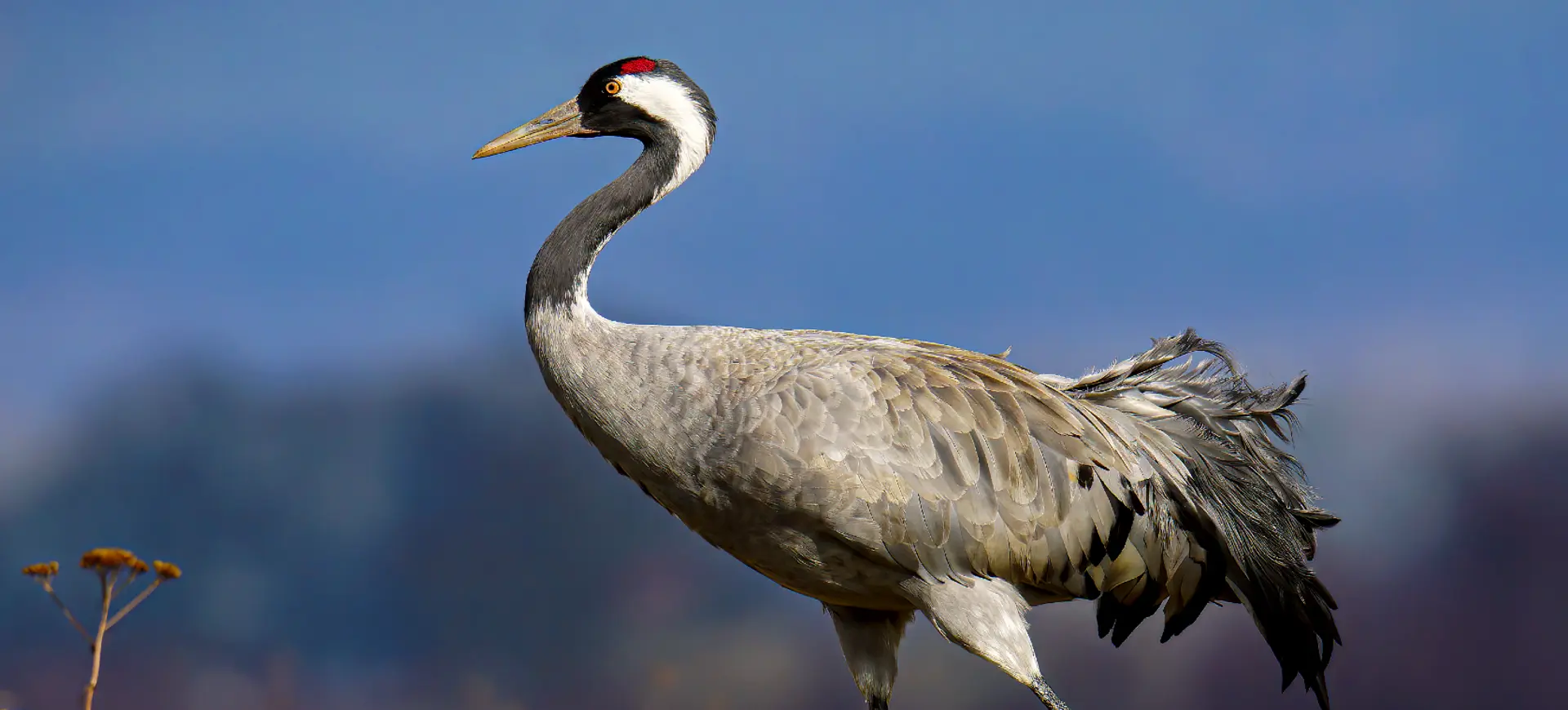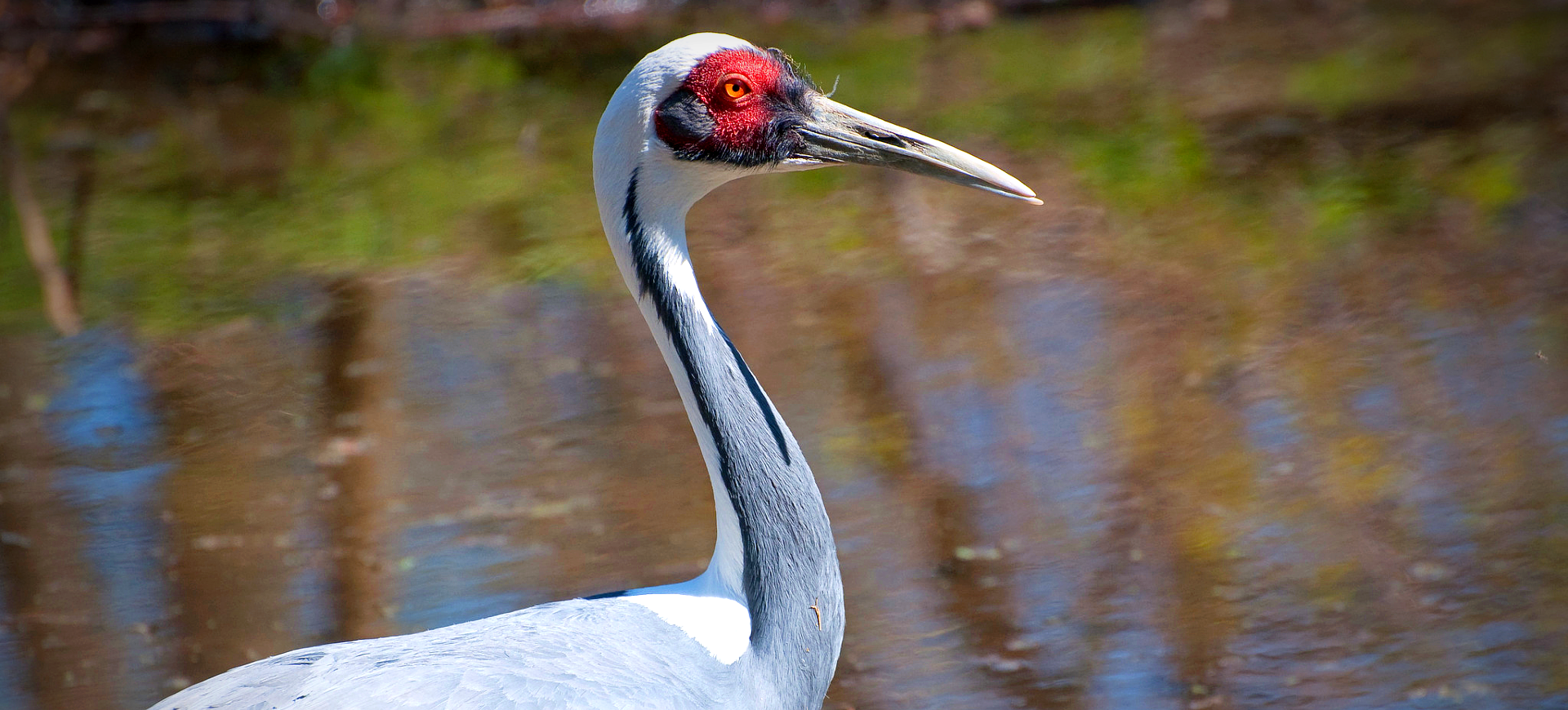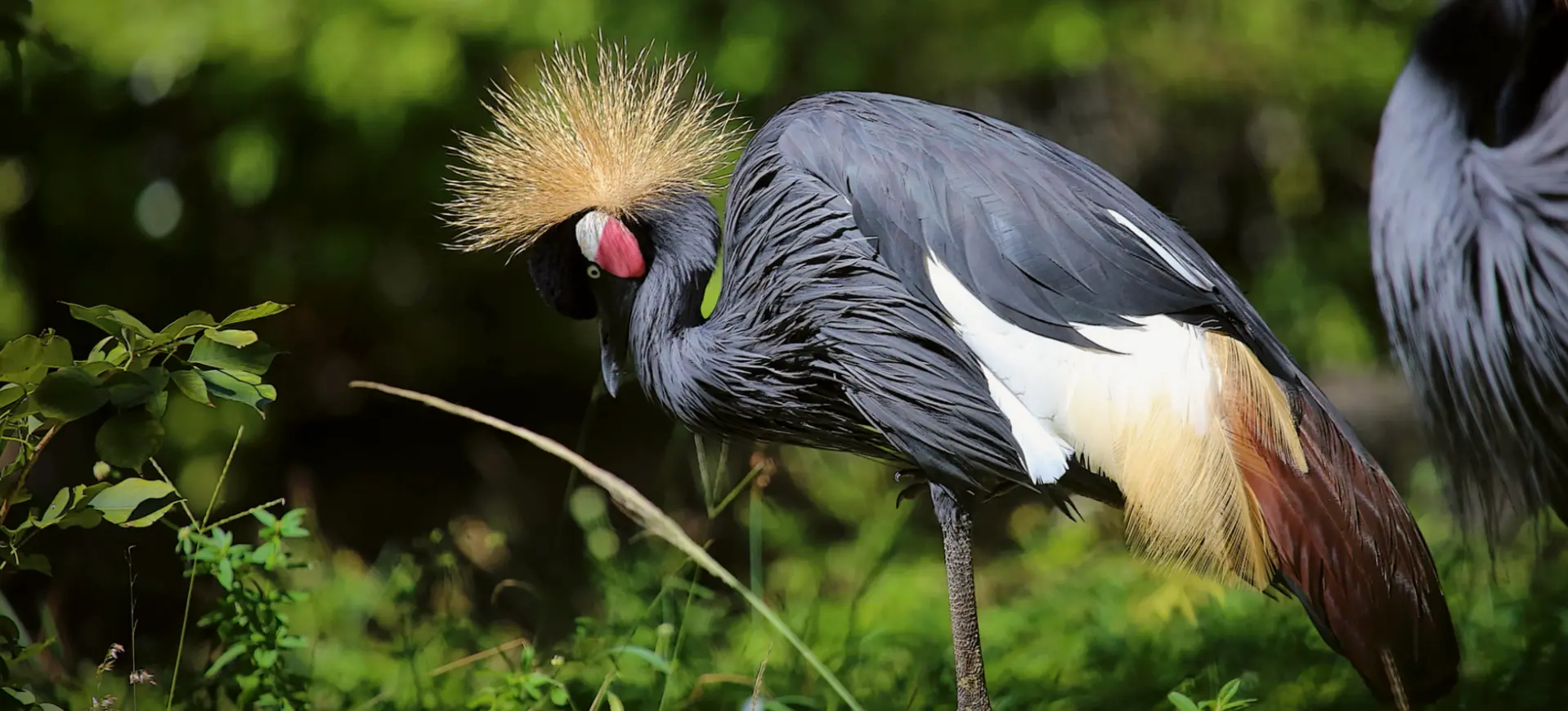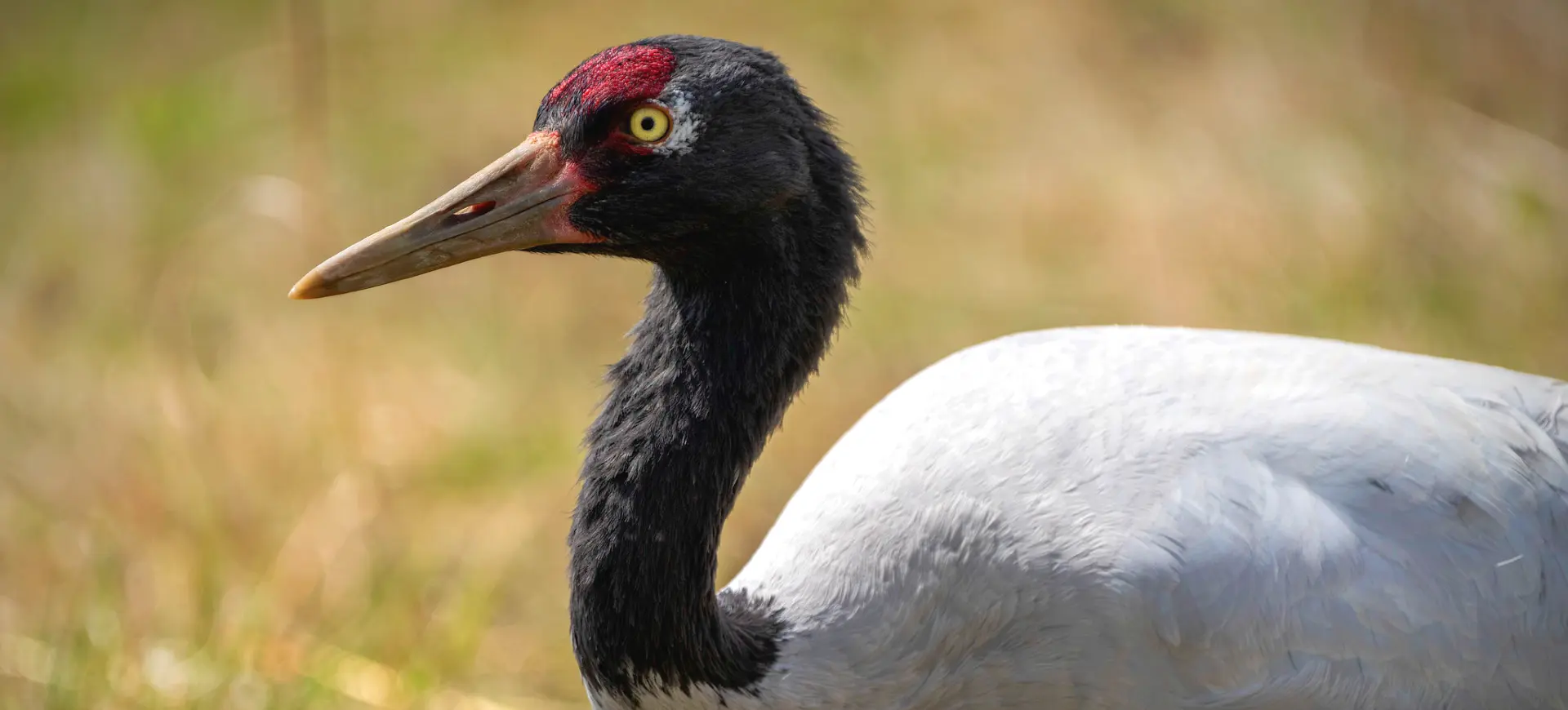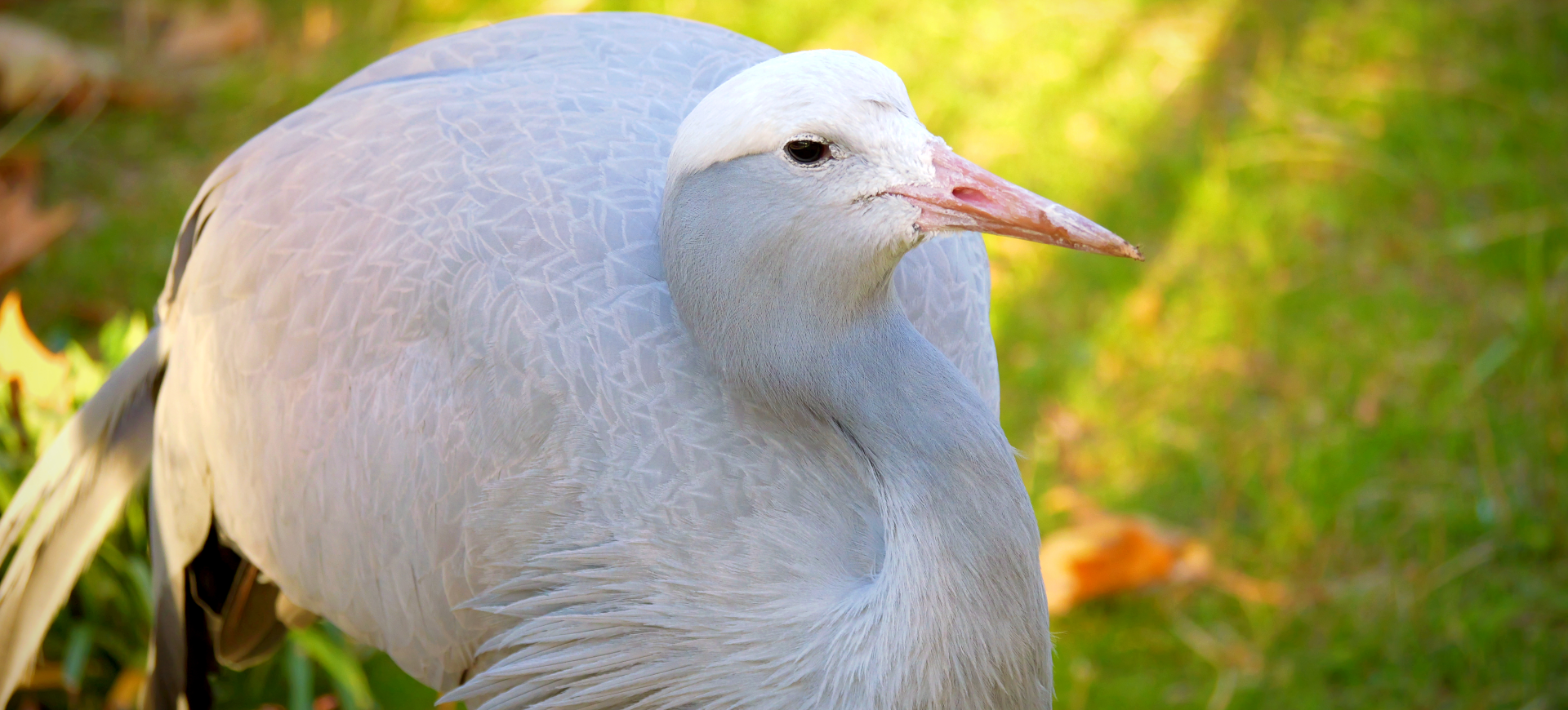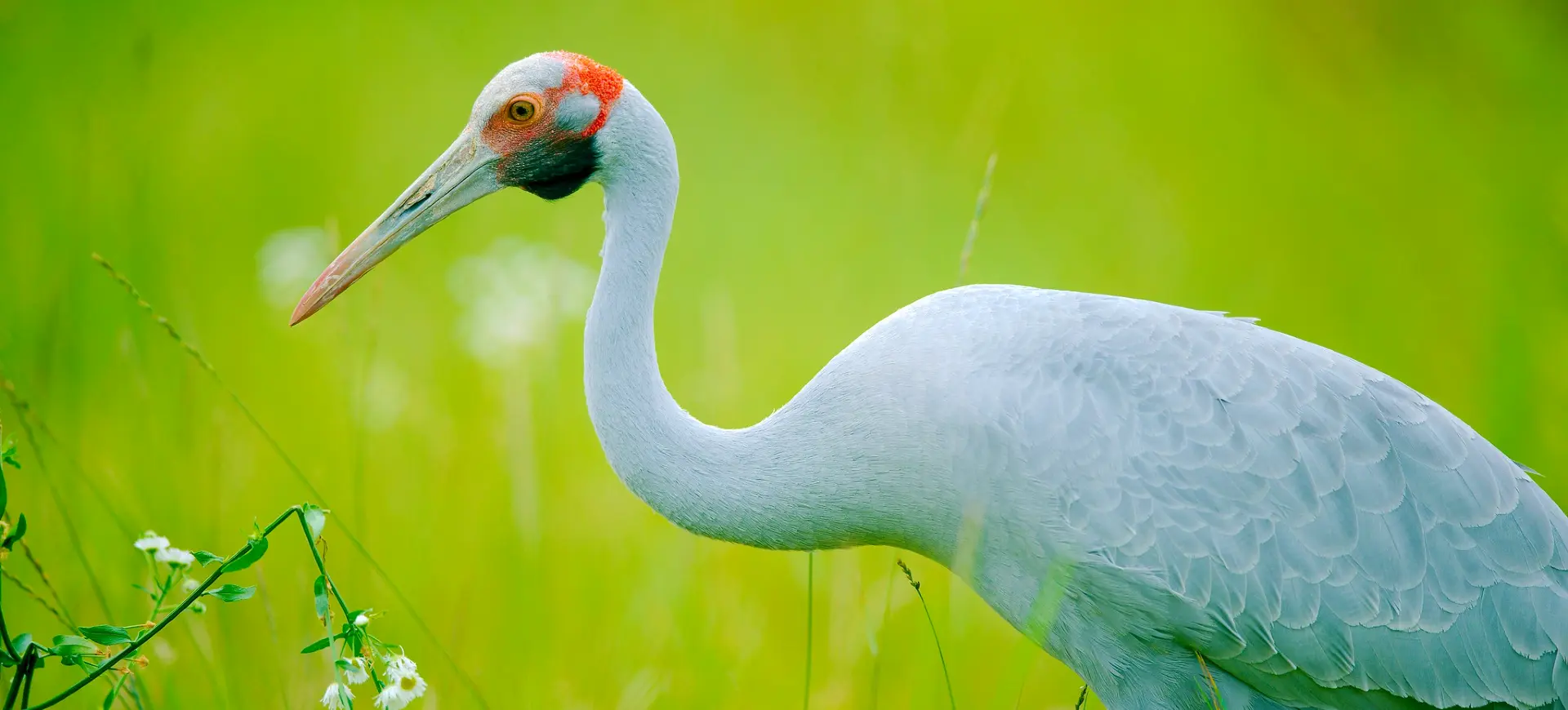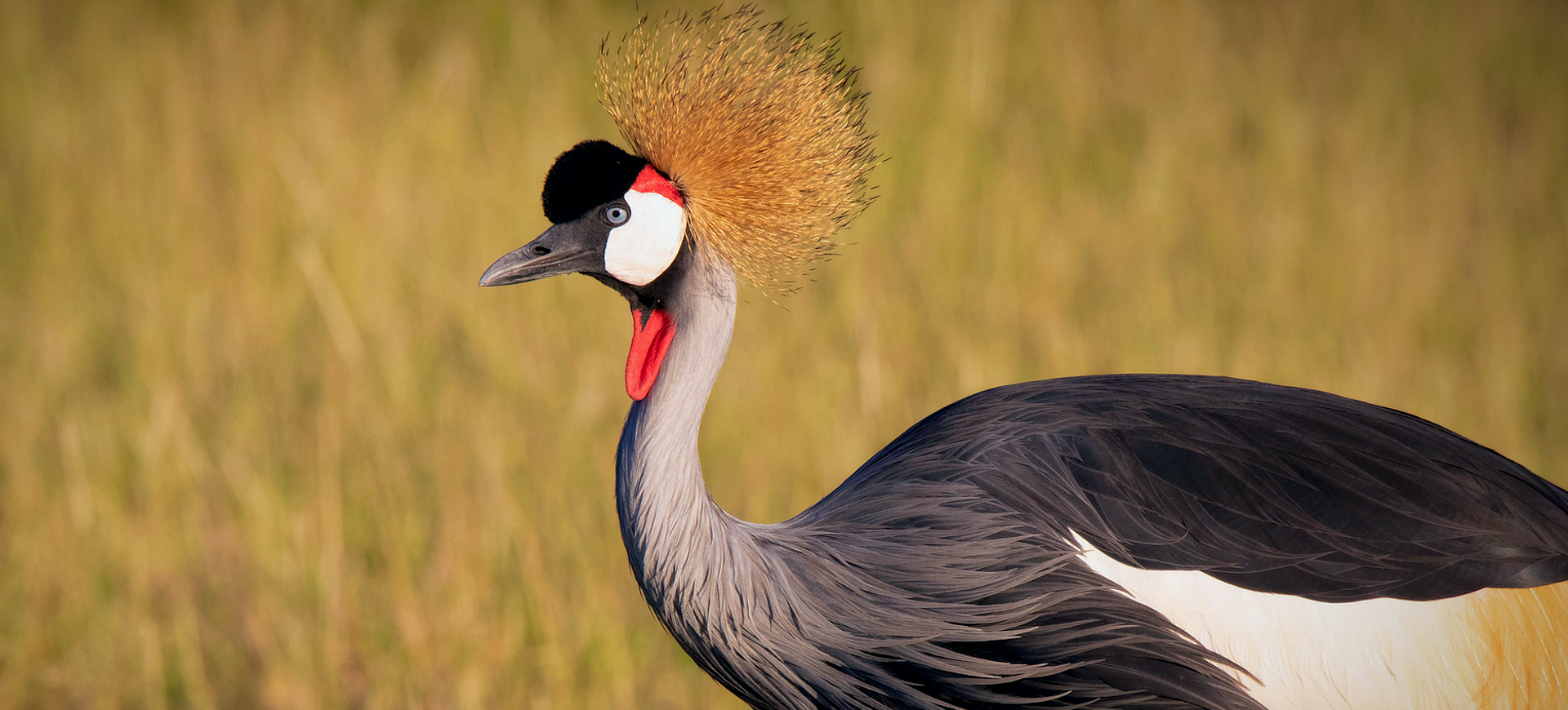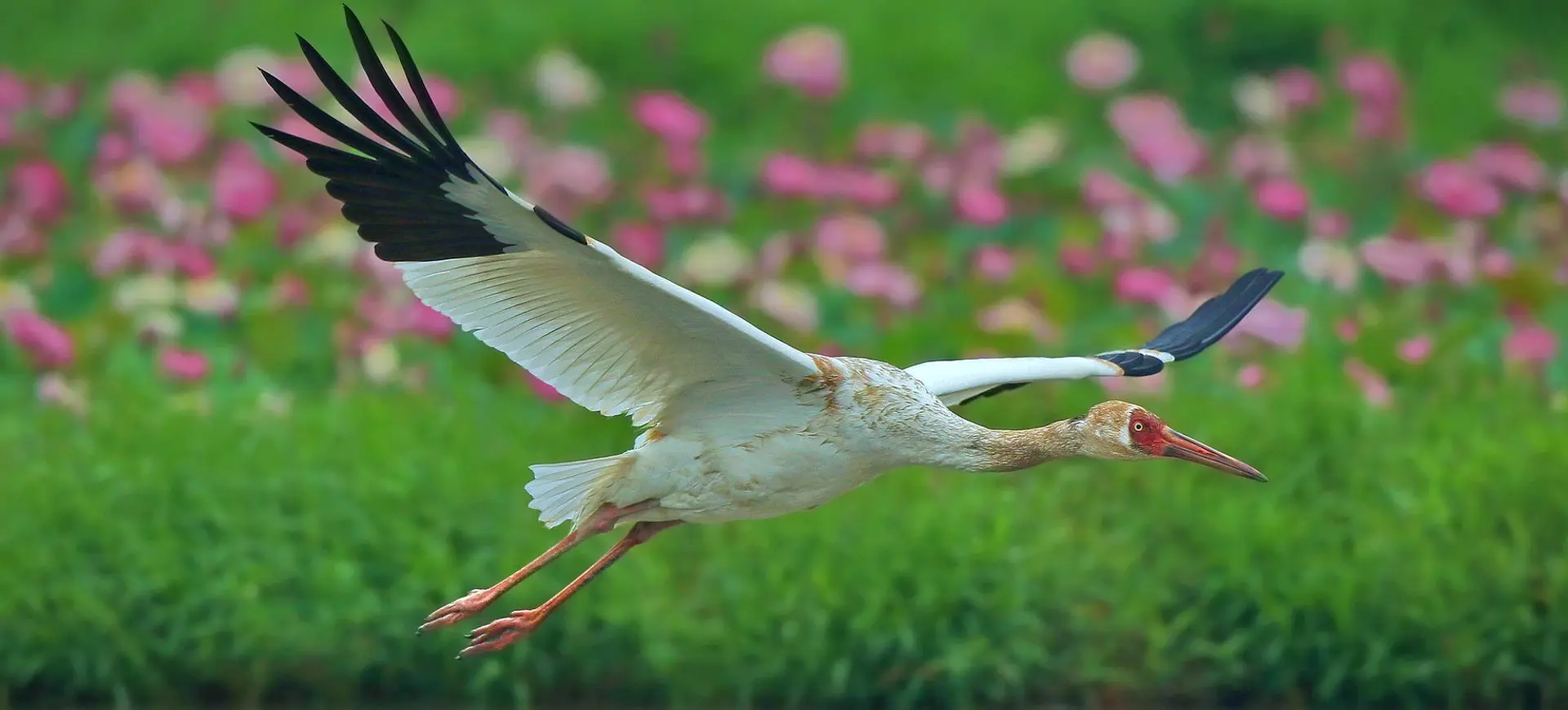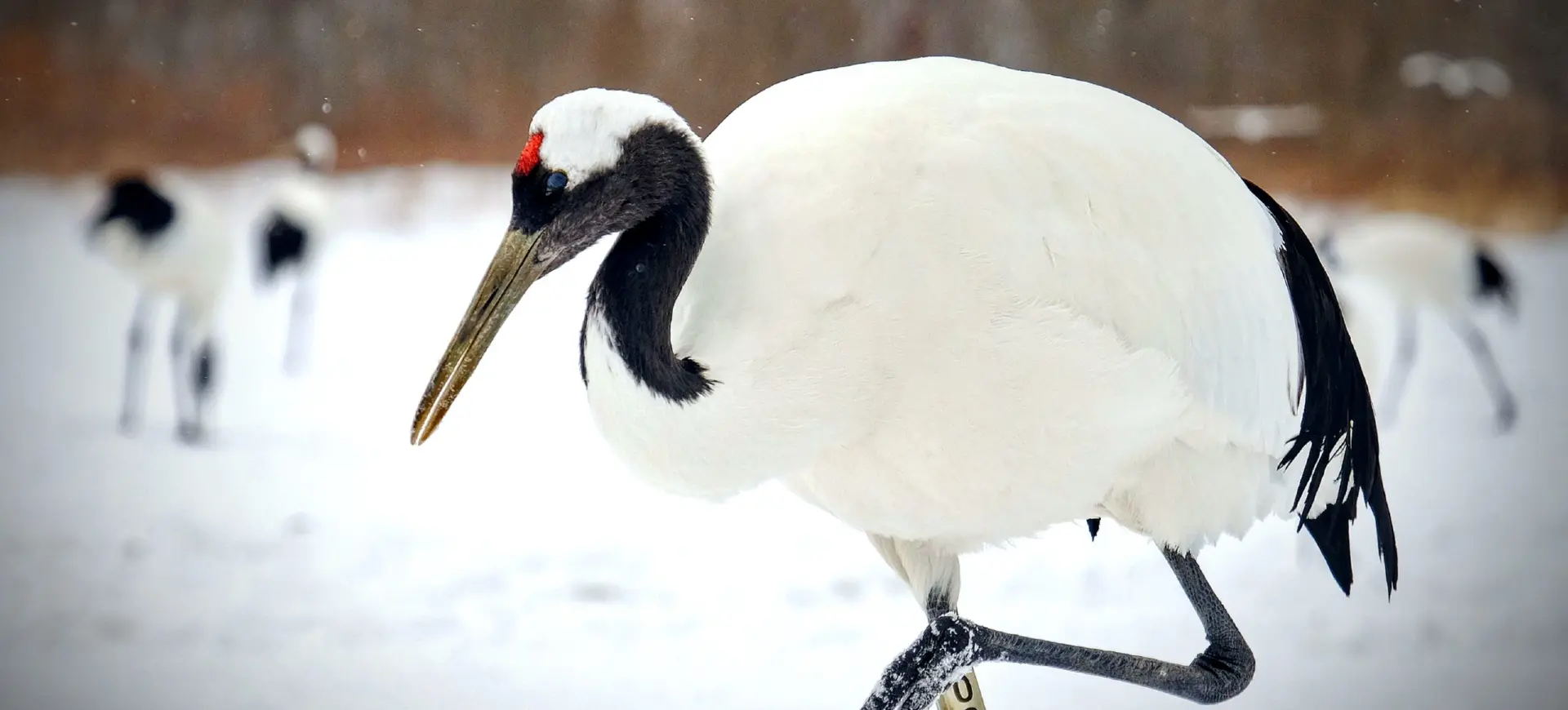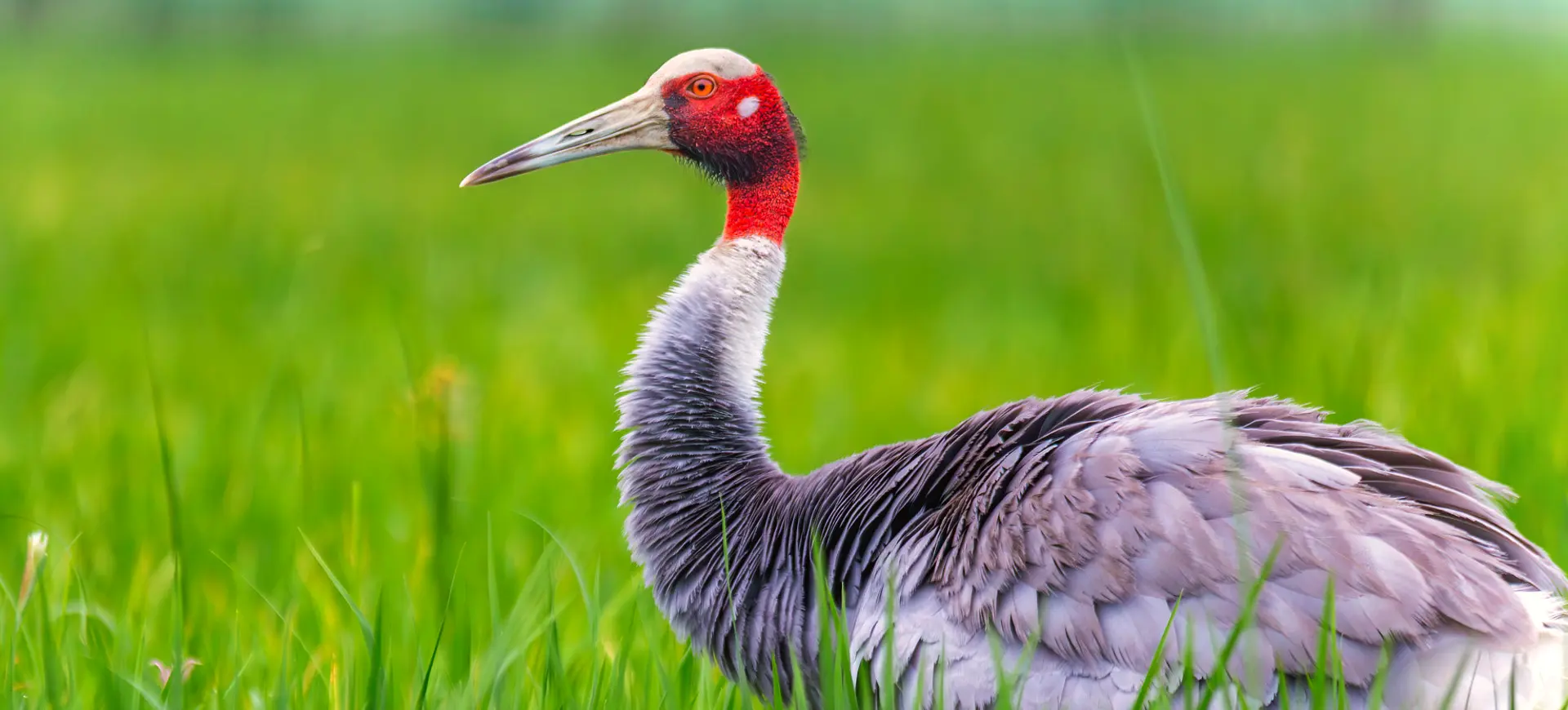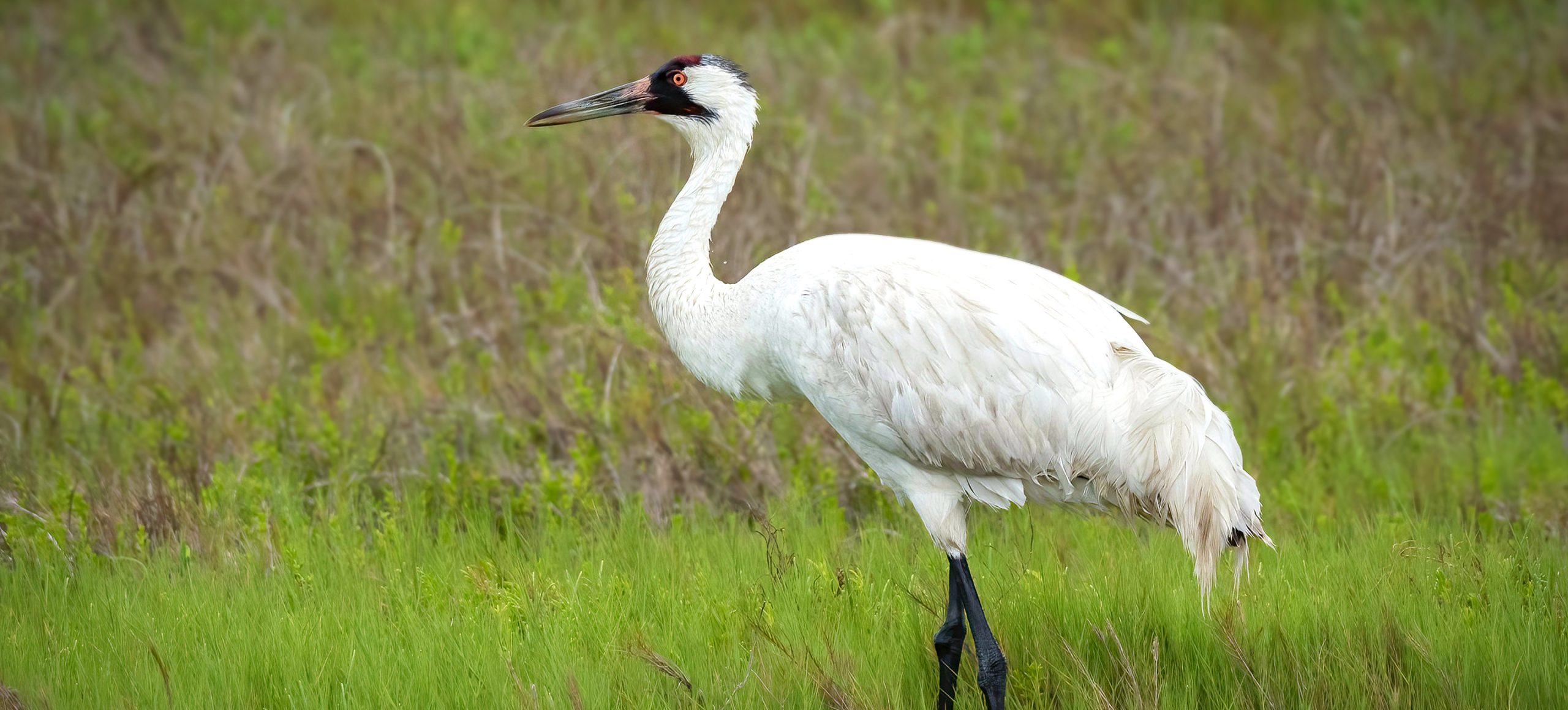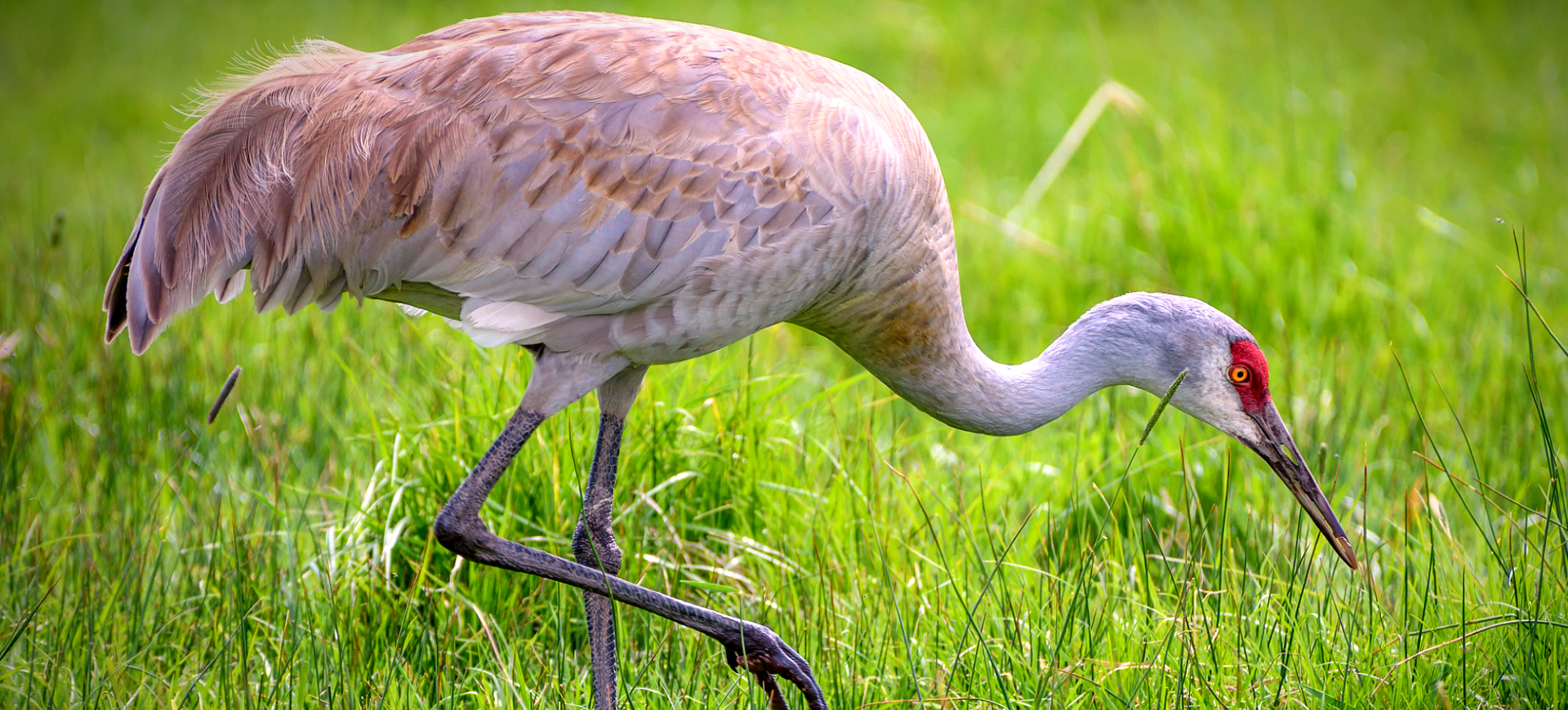Overview
The Demoiselle Crane (Anthropoides virgo) is one of the smallest species of cranes, yet it is known for making one of the most challenging migrations. It’s named “Demoiselle” by Queen Marie Antoinette of France, which means “damsel” or “young lady” in French due to the bird’s delicate and graceful appearance.
Native to Eurasia, Demoiselle Cranes are found in various habitats, including dry grasslands, agricultural fields, and desert areas. These birds have long legs, necks, and wings and possess a distinctive long, white feather plume stretching from the eye to beyond the back of the head.
The Demoiselle Crane faces challenges,s including habitat loss, hunting during migration, and collision with power lines. Still, its population is currently considered stable by the IUCN and is listed as Least Concern.
Taxonomy
Kingdom
Phylum
Class
Order
Family
Genus
Species
Type
Physical Description:
The Demoiselle Crane is a small, elegant bird, typically standing around 90 cm tall and weighing between 2 and 3 kg. Their body is light bluish-grey, with a dark grey to black patch on the front of the neck and face. A unique characteristic of the species is a long white feather plume stretching from the corner of the eye to beyond the back of the head.
Their eyes are reddish-brown, contrasting beautifully against the darker hues of their face. They have a sharply pointed bill, suitable for pecking seeds, insects, and small vertebrates from the ground. The long legs, also characteristic of cranes, aid the bird in navigating marshy wetlands and tall grasses.

Lifespan: Wild: ~25 years || Captivity: ~30 years

Weight: Male & Female: 4.4 - 6.6 lbs (2 - 3 kg)

Length: Male & Female: 35 - 39 in (90 - 100 cm)

Height: Male & Female: 35 - 39 in (90 - 100 cm)

Wingspan: 61 - 71 in (155 - 180 cm)
Characteristic:
Native Habitat:
Demoiselle Cranes are native to the steppe regions of Eurasia and migrate to Africa and the Indian subcontinent in the winter. They inhabit many habitats, including grasslands, wetlands, agricultural fields, and desert areas. Their breeding grounds are typically open grasslands, preferably near a water body.
Nests are usually made in tall grass or crops, providing concealment for the eggs and young. During the non-breeding season, these birds are found in grasslands, agricultural areas where crops are available, and wetlands which offer an abundance of insects and other small creatures for food.
Biomes:
Biogeographical Realms:
Countries:
Diet:
Diet & Feeding Habits:
Demoiselle Cranes are omnivorous, and their diet primarily consists of plant matter, insects, and small animals. They feed on various plants, including grass seeds, cereals like wheat and barley, and pulses. Insects, especially beetles, caterpillars, and grasshoppers, form a significant portion of their diet. Occasionally, they eat small vertebrates such as frogs, birds, and rodents.
Feeding typically takes place in the morning and late afternoon. They use their sharp, pointed bills to peck at the ground for food. During breeding, the adults collect insects and small animals to feed their young. In areas near humans, Demoiselle Cranes have been known to feed on crops, sometimes leading to conflicts with farmers.
Mating Behavior:
Mating Description:
The mating ritual of Demoiselle Cranes is a captivating spectacle. They perform an elaborate dance, including bowing, jumping, running, and wing-flapping. Both the male and female engage in this courtship display, strengthening their bond and acting as a territorial signal to other cranes.
The breeding season varies depending on the region, but it typically occurs in the spring and early summer. Following mating, the female lays two eggs in a ground nest, usually nestled among tall grass for concealment. Both parents share incubation duties for around 27 to 29 days. Once hatched, the chicks are precocial and can leave the nest shortly after, but they remain under the watchful eyes of their parents until they are ready to fend for themselves.
Reproduction Season:
Birth Type:
Pregnancy Duration:
Female Name:
Male Name:
Baby Name:
Social Structure Description:
Demoiselle Cranes are social birds, often found in large flocks, especially during migration. During the breeding season, they are territorial, and pairs defend their nesting grounds from others. They communicate with a high-pitched trumpet-like call, which can be heard long distances.
Groups:
Conservation Status:
Population Trend:
The population of Demoiselle Cranes in the wild is estimated to be between 200,000 and 240,000 individuals. Their population trend is considered stable and is not currently a significant conservation concern. However, they are still threatened by habitat loss, hunting during their migratory journey, collision with power lines, and pesticide poisoning.
Population Threats:
The major threats to Demoiselle Cranes include habitat loss due to agricultural expansion and urbanization, hunting and trapping during migration, collision with power lines, and pesticide poisoning. Their migratory journey is dangerous, as they often have to fly over high mountain ranges and face adverse weather conditions and human-induced threats like hunting and trapping.
Conservation Efforts:
Conservation efforts for Demoiselle Cranes include protecting their breeding and wintering grounds, reducing hunting and trapping along their migratory routes, and minimizing the risks of pesticide poisoning. Education and awareness programs are also being conducted in areas where the birds migrate or reside to mitigate human-wildlife conflict, especially conflicts arising due to crop damage.
Additional Resources:
Fun Facts
- The name “Demoiselle” was given by Queen Marie Antoinette of France, captivated by their delicate and elegant appearance.
- Demoiselle Cranes are known to make one of the most challenging migrations, crossing the high-altitude Himalayas to reach their wintering grounds.
- During courtship, Demoiselle Cranes perform a captivating dance that includes bowing, jumping, running, and wing-flapping.
- They have a unique white feather plume that stretches from the eye to beyond the back of the head.
- Demoiselle Cranes have a high-pitched trumpet-like call that can be heard over long distances.
- These birds are celebrated in the folklore and art of many cultures. In Mongolia, for example, they are symbols of longevity and good fortune.
- Unlike many cranes, Demoiselle Cranes do not build elevated nests. Instead, they nest on the ground, usually among tall grass or crops for concealment.
- They are one of the smallest crane species, yet they undertake one of the most formidable migrations.
- They have a lifespan of up to 25-30 years in captivity.
- Demoiselle Cranes are often found in large flocks outside the breeding season, and these gatherings can number in the thousands.







